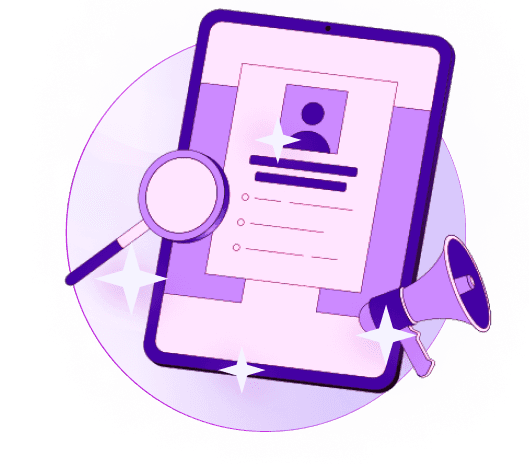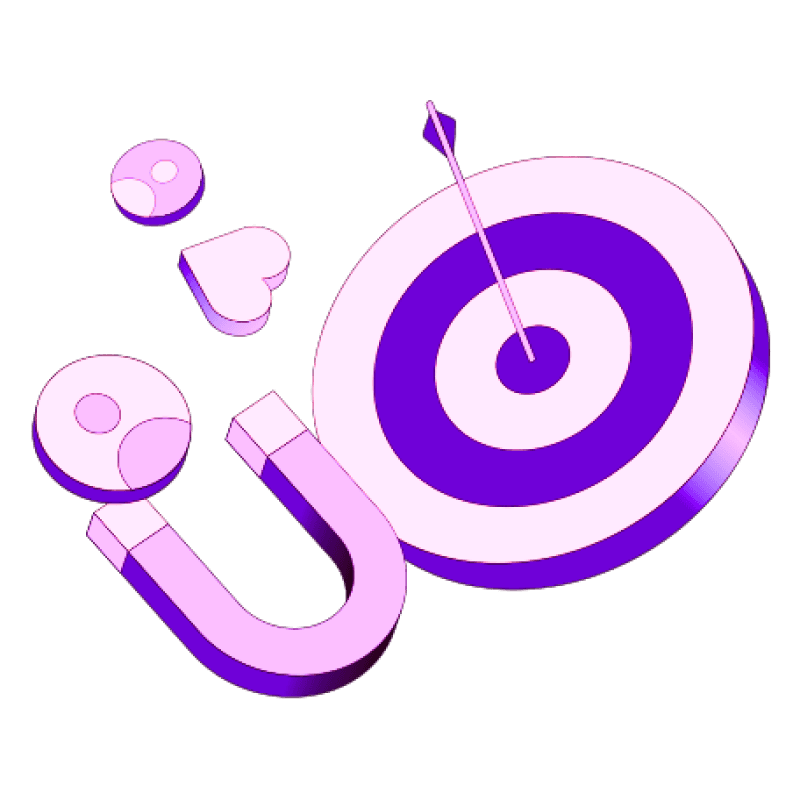Blogs
Articles

How AI for Sales Productivity Is Transforming Sales Workflows in 2025
Did you know that ai for sales productivity reveals a startling fact?
Sales representatives spend just 25% of their time selling to customers. They waste the remaining hours on administrative tasks that bring no revenue.
In this piece, we'll see how AI reshapes sales workflows in 2025 and look at seven AI-driven processes that boost sales productivity. We'll tackle common adoption challenges and show you how to build an expandable AI sales strategy.
Why AI Is Reshaping Sales Workflows in 2025
Sales teams in 2025 are seeing a major change in their operations. AI technologies have reshaped traditional processes and delivered better results. AI's growth in sales has gone beyond basic automation to powerful features that transform core sales processes.
How generative and agentic AI are changing the game
Generative AI has grown faster in sales, and 78% of sales leaders worry their companies might miss opportunities in this space. This technology studies existing sales and customer data to create tailored emails, sales pitches, and suggests potential quick-win deals that look just like human-created content.
Agentic AI shows the next stage of growth. It enables self-directed agents to follow complex workflows, set goals, plan, execute, and learn with minimal human input. Traditional AI assistants only respond to specific commands, but agentic AI works more actively. It understands sales goals, manages tools, and moves deals forward with intelligence and speed.
The results are impressive - AI could double the time sales representatives spend on direct selling. Companies using these technologies have seen real improvements. AI-powered sales teams are 1.7x more likely to grow market share compared to teams without AI.
The role of AI in sales and marketing alignment
AI excels at closing the traditional gap between sales and marketing teams. Teams that work closely together see a 38% higher sales win rate. Companies using AI for this purpose achieve 34% more revenue growth.
AI succeeds through these key actions:
Raw data becomes useful insights both teams can utilize
Marketing delivers targeted campaigns that create more qualified leads
Sales teams focus their efforts based on AI-predicted success rates
McKinsey reports that businesses using AI in sales and marketing see 10-15% more sales and 20-25% better marketing ROI. Digital channels will handle 80% of B2B sales interactions by 2025. This makes team alignment crucial for staying competitive.
7 AI-Driven Workflows Transforming Sales Productivity
AI-powered workflows are reshaping what sales teams can achieve in today's competitive market. Smart systems now handle routine tasks, analyze complex data, and provide insights that boost team efficiency. Here are seven game-changing AI-driven workflows that will transform sales operations in 2025.
1. Predictive lead scoring to prioritize high-value prospects
AI analyzes behavioral patterns, cross-channel intent signals, and unstructured data to spot sales-ready prospects. Teams can now target the right leads with precision 98% of sales teams using AI report improved lead prioritization. AI continuously updates lead rankings based on ICP fit, recent behavior, and historical win patterns. This helps sales teams focus on opportunities with the best conversion potential.
2. Personalized outreach automation for better engagement
AI goes beyond simple templates to create truly personalized communications through behavioral analysis and engagement history. Teams using these platforms see remarkable results with open rates reaching 92% and reply rates hitting 64%. The system studies prospect data to create messages that speak to specific pain points and recent business changes.
3. Intelligent forecasting to reduce revenue uncertainty
AI forecasting improves prediction accuracy by analyzing historical data, sales trends, and external factors. The system spots pipeline gaps for upcoming quarters and runs forecast simulations for different scenarios. Solutions improve forecast accuracy by 40% on average. Teams can now make better decisions about planning, staffing, and compensation using reliable data.
4. Conversational AI assistants for 24/7 lead handling
Round-the-clock prospect engagement is now possible with AI assistants. A retail company saw qualified leads jump 40% after implementing conversational AI to handle customers outside business hours. These assistants qualify leads immediately and connect them to the right team members, creating a smooth handoff between marketing and sales.
5. Workflow orchestration to eliminate manual tasks
AI orchestration streamlines entire work sequences not just single tasks. This approach delivers strong ROI by cutting down errors and speeding up ticket resolution. Sales teams save up to two hours each day that they would typically spend on administrative work.
6. Real-time intent detection to act on buyer signals
Intent detection tools track prospect buying signals across your tech stack. AI helps identify and connect with potential buyers at peak interest times, especially important since 95% of website visitors remain anonymous. The system alerts your team when contacts from open opportunities check pricing pages, enabling quick follow-up.
7. AI-powered pricing and deal optimization
AI pricing optimization evaluates billions of scenarios to determine the best price points for each store and item. Companies using these solutions have boosted gross profit by 5-10% while improving revenue and customer value perception. These systems create optimal pricing by analyzing hundreds of variables at once, moving beyond simple rule-based approaches.
Sales teams ready to adopt these innovative workflows can turn to Persana. Their AI solutions automate prospecting tasks and provide insights that drive revenue growth.
Overcoming Barriers to AI Adoption in Sales
AI implementation for sales productivity often hits roadblocks due to basic obstacles. Teams need systematic solutions to realize its full potential.
Cleaning and connecting sales data
Quality data forms the foundation of successful AI implementation. Companies don't deal very well with sales data scattered across multiple systems that lack proper governance. Sellers need clean, connected data to spot promising accounts and customize their messaging. Teams must first remove outdated or wrong information which can make up 80% of existing data. Bad data quality affects AI performance directly - incomplete records create biased models. Duplicate entries cause engagement overestimation while outdated information produces recommendations based on irrelevant conditions.
Standardizing fragmented sales processes
Inconsistent sales processes create major roadblocks beyond data quality issues. Companies face challenges like unstructured sales workflows and mixed messaging that slow down growth.
Success requires companies to:
Set clear AI implementation goals
Create AI-powered sales playbooks that keep messaging consistent
Review current workflows to find repetitive or time-consuming tasks
Driving change management and team buy-in
Getting team adoption proves most challenging. Frontline teams resist change and think meeting quotas is enough without trying new technologies. Successful change needs constant executive attention and a dedicated team with clear responsibilities. Research shows that 48% of employees would use AI tools more often with proper training. Another 45% would increase usage if tools merged with their daily work. Teams overcome resistance better when internal champions show AI's benefits clearly.
Building a Scalable AI Sales Strategy
Building a successful AI sales productivity strategy needs careful planning beyond just buying tools. Companies achieve real results by following consistent patterns. They take a complete view of the sales process rather than simply adding AI to existing workflows.
Start small with high-effect use cases
The best approach starts with focused implementation instead of trying to change everything at once. Top companies choose one or two areas at the start of the sales cycle where sellers need help most. They focus on identifying, informing and acting on leads. This targeted approach helps show early wins, builds momentum, and gets the team's support to expand AI adoption.
Sales, marketing, and ops must help choose tools
Success with AI needs teams working together. Teams adopt technology more readily when reps help pick the tools. This results in solutions that fix actual problems instead of imaginary ones. Teams with sales and marketing working closely see 38% higher win rates. The best control and access comes from blending AI with your data cloud. This serves as the main upstream system with a single source of truth for customer data.
Check ROI and improve based on feedback
Your returns will grow if you set clear metrics that show how AI initiatives perform:
Keep track of both concrete ROI metrics (cost savings, time savings) and soft factors (better customer satisfaction)
Pick specific goals like cutting customer acquisition costs by 20% or improving productivity by 35%
Look at numbers and feedback monthly to spot trends
Ready to make your AI sales strategy smoother? Persana offers AI solutions that automate prospecting tasks and provide useful insights to boost revenue growth.
Conclusion
Sales productivity is experiencing a revolution through AI technologies that fundamentally change how teams will operate in 2025. Sales representatives spend only 25% of their time on actual selling activities. This is the biggest problem AI addresses. Companies that use these technologies have seen their win rates grow by over 30% through better lead qualification.
The seven AI-driven workflows provide solid solutions to old sales challenges. Predictive lead scoring removes guesswork. Tailored outreach improves engagement rates substantially. Intelligent forecasting reduces revenue uncertainty, and conversational AI keeps prospects engaged 24/7. The workflow orchestration, immediate intent detection, and AI-powered pricing optimization work together to create a complete productivity system that brings outstanding results.
Notwithstanding that, teams must overcome several obstacles to implement AI successfully. Data quality forms the foundation of effective AI and needs thorough cleaning and connection across systems. AI operates effectively when fragmented sales processes are standardized. Maybe even more importantly, the technology gets used when teams buy in through thoughtful change management.
Key Takeaways
AI is revolutionizing sales productivity by addressing the critical issue that sales reps spend only 25% of their time actually selling, with the potential to double that through intelligent automation.
• AI can double selling time: Sales reps currently spend only 25% of time selling; AI automation handles administrative tasks to potentially double productive selling hours.
• Seven key workflows drive results: Predictive lead scoring, personalized outreach, intelligent forecasting, and conversational AI create measurable productivity gains.
• Data quality is foundation: Clean, connected sales data across systems is essential before AI can deliver accurate insights and recommendations.
• Start small for success: Focus on 1-2 high-impact use cases initially rather than attempting complete transformation to build momentum and team buy-in.
• Cross-functional alignment matters: Companies with aligned sales and marketing teams using AI see 38% higher win rates and 34% revenue growth increases.
The transformation is already underway companies implementing AI-driven sales processes report win rate improvements exceeding 30%, while 92% of organizations plan to increase AI investments over the next three years.

Create Your Free Persana Account Today
Join 5000+ GTM leaders who are using Persana for their outbound needs.
How Persana increases your sales results
One of the most effective ways to ensure sales cycle consistency is by using AI-driven automation. A solution like Persana, and its AI SDR - Nia, helps you streamline significant parts of your sales process, including prospecting, outreach personalization, and follow-up.



